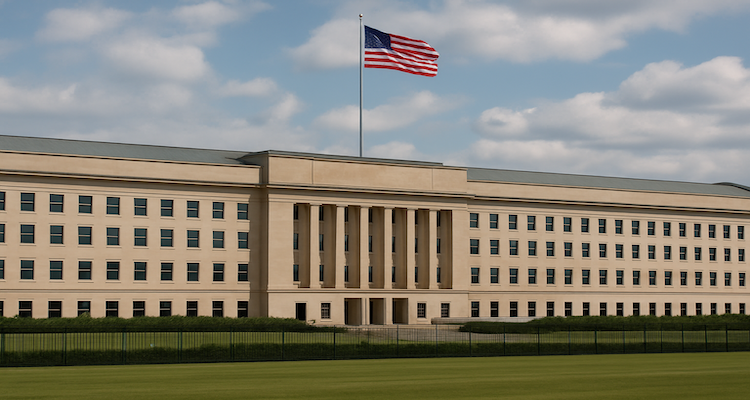NATO on Edge as Russia and China Escalate Hybrid Warfare Tactics
Rising Russian drone incursions and China’s growing military maneuvers test NATO unity and U.S. resolve, raising questions over global security strategy.
A Show of Force Meets a New Era of Tension
In early September, a U.S. B-2 stealth bomber cut across the North Atlantic, escorted by Norwegian F-35s, before sinking a target vessel in a striking display of power. Just days later, Russian drones breached Polish airspace, a stark reminder that military theatrics no longer guarantee deterrence. The back-to-back events underscored an unsettling reality: the U.S. and its allies are entering a new era of hybrid confrontation where symbolic shows of might face direct challenges from Moscow and Beijing.
Context: From the Pacific to the Kremlin’s Backyard
Washington has long showcased its military dominance through dramatic drills. During last year’s Rim of the Pacific exercises, the U.S. Navy sank the decommissioned USS Tarawa with precision-guided bombs a message widely interpreted as a warning to Beijing over Taiwan.
This year, the stage shifted closer to Russia. The exercises unfolded where the Arctic meets the Atlantic, with America’s latest supercarrier, the USS Gerald Ford, joining maneuvers. At the same time, NATO ran drills across Europe to coincide with Russia’s own “Zapad” war games in Belarus.
Yet, while these displays project strength, Russia’s drone and jet incursions in September painted a different picture: one where NATO is forced into a reactive posture, struggling to reassure both its European members and allies across the Pacific.
Russia’s Provocations and NATO’s Response
On September 9, around two dozen Russian drones crossed into Polish airspace. NATO warplanes intercepted several, prompting the alliance to launch a heightened air defense initiative named “EASTERN SENTRY.”
NATO’s Supreme Allied Commander Europe, General Alexus Grynkewich, praised the swift response, likening it to the “BALTIC SENTRY” mission launched after undersea cables were cut in 2024. That earlier effort relying mainly on European assets helped deter further sabotage in the Baltic.
But Russia quickly escalated again. Within days, three MiG-31 fighters entered Estonian airspace for a tense 12-minute incursion. Italian jets escorted them out, but the episode exposed disagreements within NATO over how aggressively to respond, highlighting fractures that Moscow is eager to exploit.
Hybrid Warfare: Beyond the Battlefield
The Kremlin’s tactics reflect a broader playbook. From unexplained drones over Nordic airports to suspected cyber sabotage, Russia’s strategy is less about direct confrontation and more about sowing division.
“Hybrid war is about threatening, dividing, and destabilizing,” Danish Prime Minister Mette Frederiksen told the Financial Times, warning that drones one day, cyberattacks the next, and sabotage the day after cannot be countered by conventional defense alone.
China, meanwhile, is testing its own gray-zone maneuvers. This month, Beijing declared the Scarborough Shoal legally part of the Philippines’ Exclusive Economic Zone according to an international tribunal a “Chinese nature reserve.” The move signals Beijing’s intent to rewrite maritime norms in its favor.
Shifts in U.S. Military Doctrine
Back in Washington, the Pentagon itself is undergoing a cultural and strategic shift. At Quantico, Defense Secretary Pete Hegseth, now styled “Secretary for War,” stood alongside President Donald Trump to announce that the U.S. military must focus less on “defense” and more on winning wars outright.
“Defence is reactionary. War is decisive,” Hegseth told senior commanders, arguing that the Pentagon should unleash overwhelming force only on its own terms, avoiding the drawn-out entanglements of past “forever wars.”
This framing plays well with Trump’s base but unsettles allies already wary of wavering U.S. commitments. European governments, still bruised by Washington’s public rebuke of Ukraine’s Volodymyr Zelenskyy earlier this year, fear they could face similar treatment in a crisis.
The Strain on NATO Unity
While Russia’s economy and military remain stretched thin by the war in Ukraine, its provocations have forced Europe to reckon with its own vulnerabilities. Some leaders argue the drone and jet incursions serve as a wake-up call to bolster defenses, regardless of U.S. ambivalence.
Yet the lack of a consistent American lead looms large. As Danish scholar Sten Rynning noted, NATO’s credibility has long rested on U.S. decisiveness. Without it, concerns grow that Russia could test the alliance with limited land grabs such as seizing Estonia’s Russian-speaking city of Narva or isolated Baltic islands without triggering a unified response.
The China Factor and Global Stakes
Europe’s concerns are mirrored in Asia. China’s intensifying operations around Taiwan and the Philippines, coupled with undersea cable disruptions, are raising alarms. Analysts warn that a Chinese move against Taiwan could be paired with a Russian offensive in Europe, forcing NATO into a two-front crisis.
The U.S. is attempting to deter Beijing through deployments like the Typhon missile system in Japan, expanded unmanned weapons programs, and its ongoing AUKUS submarine pact with Australia. But uncertainty over whether Washington will prioritize Asia over Europe fuels unease across both continents.
Impact and Outlook
The September incursions underscore a dangerous shift: deterrence through traditional military drills may no longer be enough. Russia and China are exploiting the blurred boundaries of hybrid warfare testing Western resolve with actions carefully calibrated to stay below the threshold of war.
For Europe, that means preparing to defend itself with or without unwavering U.S. backing. For Washington, it raises the question of whether rebranding the Pentagon as a “Department of War” truly strengthens deterrence or risks alienating the very allies needed to face the world’s next crisis.
A World on the Edge
As Moscow and Beijing continue to probe the vulnerabilities of NATO and U.S. alliances, the balance of global security is entering uncharted territory. Europe may find strength in greater self-reliance, but the prospect of simultaneous crises across two continents leaves little room for complacency.
Trump and Hegseth’s call for a war-focused Pentagon may resonate at home, but in a world increasingly defined by hybrid tactics, the real test lies in whether the West can adapt its deterrence strategies before the next incursion sparks something far bigger.
ALSO READ: Judge Rejects Musk’s Bid to Shift SEC Case Out of D.C.











